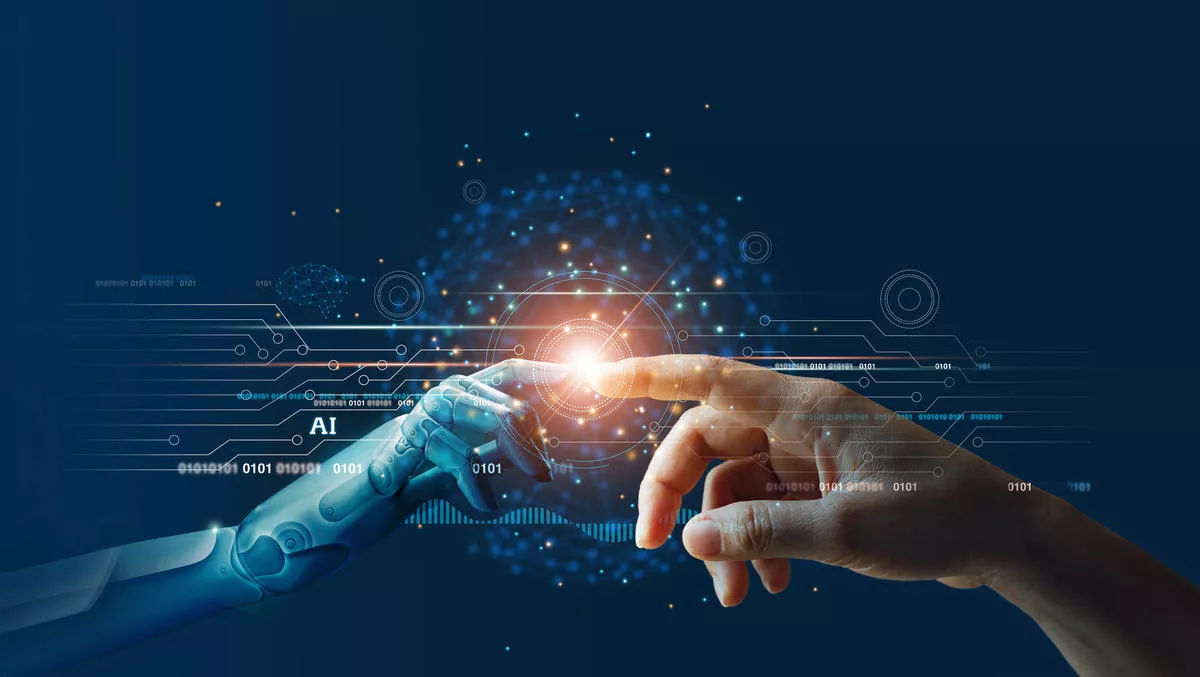
AI as the biggest driver of organisational growth - Citrix
Artificial intelligence has been revealed as the biggest driver of organisational growth, according to new research from Citrix.
What does the future of work hold? In a world where it's impossible to predict what will happen tomorrow, it's a tough question to answer, Citrix says.
"But businesses that hope to emerge from the global pandemic in a stronger, better position need to be thinking about – and planning for future models – today."
Citrix undertook Work 2035, a year-long examination of global work patterns and plans, to understand how work will change and the role that technology will play in enabling people to perform at their best.
Driven by flexible models and intelligent solutions that remove the complexity and noise from work, employees will be more engaged and productive and fuel innovation and growth like never before, Citrix says.
Citrix research found robots will not replace humans – but they will make us smarter and more efficient.
More than three quarters of those polled (77%) believe that in fifteen years, artificial intelligence (AI) will significantly
speed up the decision-making process and make workers more productive.
New jobs will be created – new roles will emerge to support a technology-driven workplace and the changing relationship between humans and machines. Here are the positions respondents believe will be created:
• Robot / AI trainer (82% / 44% of employees)
• Virtual reality manager (79% of leaders / 36% of employees)
• Advanced data scientist (76% of leaders / 35% of employees)
• Privacy and trust manager (68% leaders / 30% of employees)
• Design thinker (56% of leaders / 27% of employees)
Work will be more flexible – technology that allows for seamless access to the tools and information people need to collaborate and get work done wherever they happen to be, will fuel flexible models that the future of work will demand.
• 67 per cent of professionals (business leaders and workers combined) believe that a "platform"
model – which creates value by facilitating exchanges between groups or individuals using digital
technology – will dominate work in the future.
• 60 per cent of workers believe permanent employees will become rare by 2035.
• 80 per cent of leaders believe that technology platforms will provide instant access to the highly
specialised, on-demand talent required to power future organisations and accommodate rapid
changes in business and customer needs.
• 39 per cent of leaders believe that in 2035, the majority of high-value specialist workers will be
on-demand and freelance workers.
Leadership will have a new look – more than half of those surveyed (57%) believe AI will make most business decisions and potentially eliminate the need for senior management teams.
• 75 per cent think most organisations will have a central AI department overseeing all areas of the
business.
• 69 per cent believe that the CEO will work in a human-machine partnership with a Chief of
Artificial Intelligence (CAI).
Productivity will get a major boost – technology, closely integrated with humans, will drive step changes in productivity as workers are supported by solutions that enable them to perform at their best.
"AI-ngels" – digital assistants driven by AI – will draw on personal and workplace data to help employees prioritise their tasks and time and ensure mental and physical wellness.
These worker augmented assistants will, for example, schedule meetings to take place at the most effective time based on factors ranging from the blood sugar levels of participants to their sentiments at different times of day. And while the meetings are taking place, they will monitor concentration levels and attitudes and adjust as necessary to drive optimal outcomes.
More than half of professionals surveyed (51%) believe technology will make workers at least twice as productive by 2035. Among the solutions they believe will be commonplace:
• AI that anticipates and performs tasks based on habits and preferences
• AI nudges
• AI personal assistants
• AI-guided digital wellness to ensure employees' mental and physical well being
• Wearable technology to interact with systems
• Augmented reality glasses
• Neuro-linked technology for controlling devices
• Exoskeletons to enhance performance-related tasks
Employee engagement will improve – as technology and AI takes over time-consuming, mundane tasks, work will become more strategic and employees more engaged.
• 83 per cent of professionals believe that by 2035, technology will automate low-value tasks,
freeing workers to focus on the meaningful work they want and are paid to do.
• 79 per cent say it will be a significant factor in upskilling human workers, creating new
opportunities for personal development and career growth.
Innovation and growth will soar – organisations will invest more in technology and AI than human
capital. This will open the door to unprecedented levels of innovation and new revenue streams and fuel
sustainable growth – particularly among small businesses.
• 90 per cent of business leaders believe that in 2035, AI technology investment will be the biggest
driver of growth for their organisation.
• 72 per cent of professionals believe that by 2030, AI will generate more revenue for their
organisation than human workers.
• 63 per cent of professionals believe that technology will level the playing field and convey
advantage to small companies.
"The COVID-19 pandemic has forced companies to reimagine the way things get done, and over the next 15 years, they will face more challenges and disruptions than ever," says Tim Minahan, executive vice president of Business Strategy, Citrix.
"But as Work 2035 makes clear, within this chaos lies opportunity. Savvy companies are using this crisis to begin planning for the 'next normal'. Not just return to where they were, but to embrace new workforce and work models to power their business forward," he explains.


